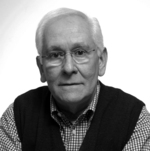
Juan de Andrés
Juan de Andrés (Arévalo, Uruguay, 1941) got his start in painting in Montevideo in 1958 with the constructivist painters Carlos Llanos and Day Man Antúnez, members of the legendary workshop founded by Joaquín Torres García (1874-1949), creator of constructive universalism. His first jobs were as an art teacher in secondary school and as a mural artist. In 1977 he moved to Spain in order to escape the Uruguayan military dictatorship, settling first in Zamora and then, from 1980, in Barcelona. Here he made friends with Joan Hernández-Pijoan, Albert Ràfols-Casamada, Josep Guinovart and other important artists. He soon established himself as a member of the dynamic Catalan art scene influenced at the time by the diverse currents prevailing in Europe.
Avoiding these tendencies, Juan de Andrés followed his own path in his creative work. From a foundation in the lessons of Torres García’s constructive universalism with its squares and geometric compartments, each inhabited by a symbol of the universal imaginary, the artist leaned further and further towards a radical abstraction, free from references to the outside world. Thus came into being the geometric and constructive character in works of extreme rationality and austerity, of high precision and purity. From there, he began to move on from the flat surface, adding to his painting elements of relief that was to give them a corporeal quality.
The materials Juan de Andrés uses in his boxes, assemblies, structures and constructions include wood, paper, cardboard and canvases and fabrics of various textures. His particular intimate familiarity with them is reflected in the perfect, loving workmanship of the works. The artist’s material sensuality coincides with his acute sensitivity to forms, their precision, measure and balance. His range of colour preferences includes whites, blacks and greys, browns, ochres and cyans, yellows and reds, in refined shades and nuances.
From the combination and interaction of all these elements arise compositions of an architectural essence, constructions abstract yet eminently harmonious, imbued with serenity, spirituality and depth.




